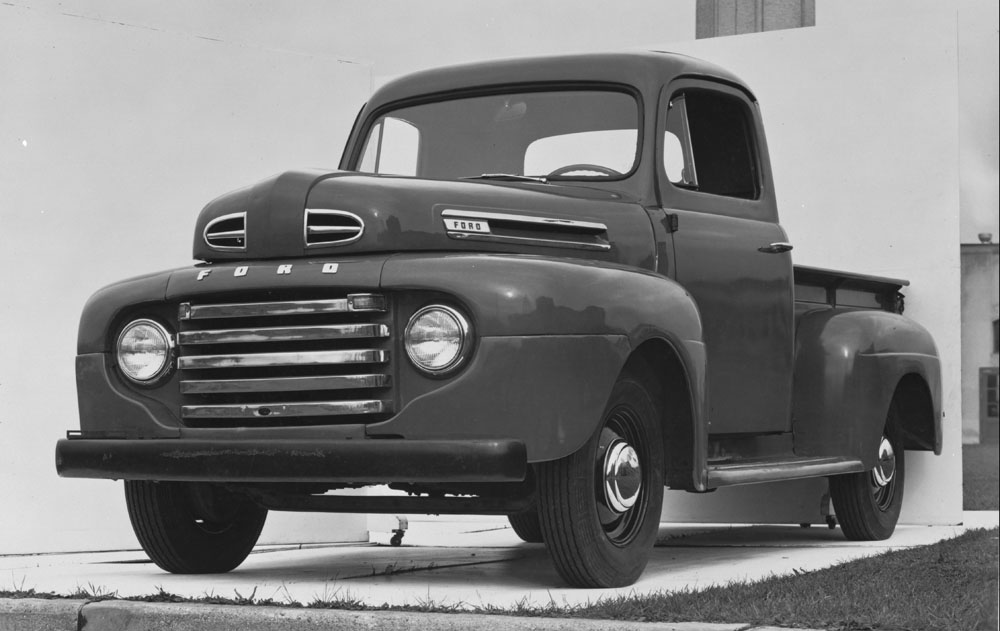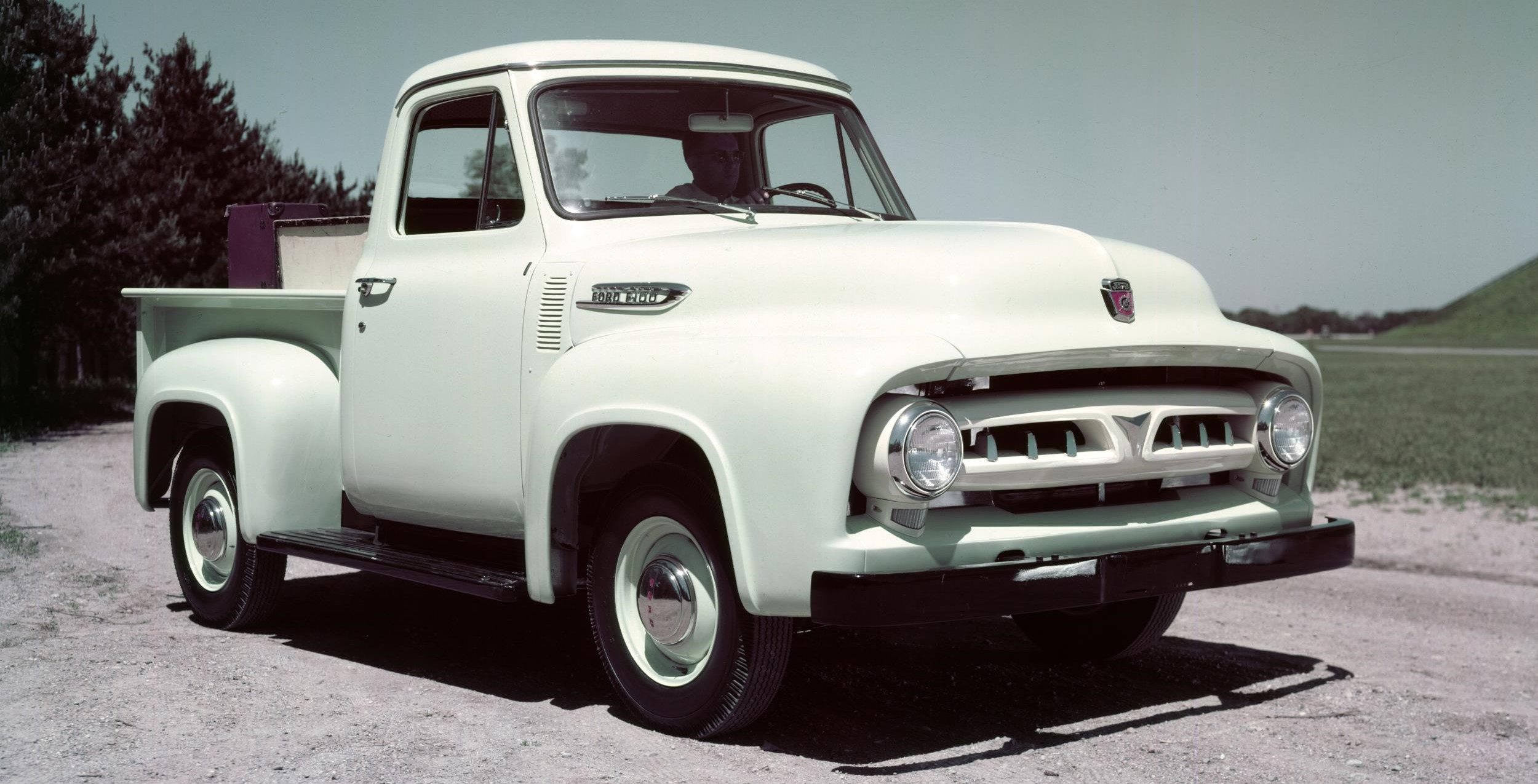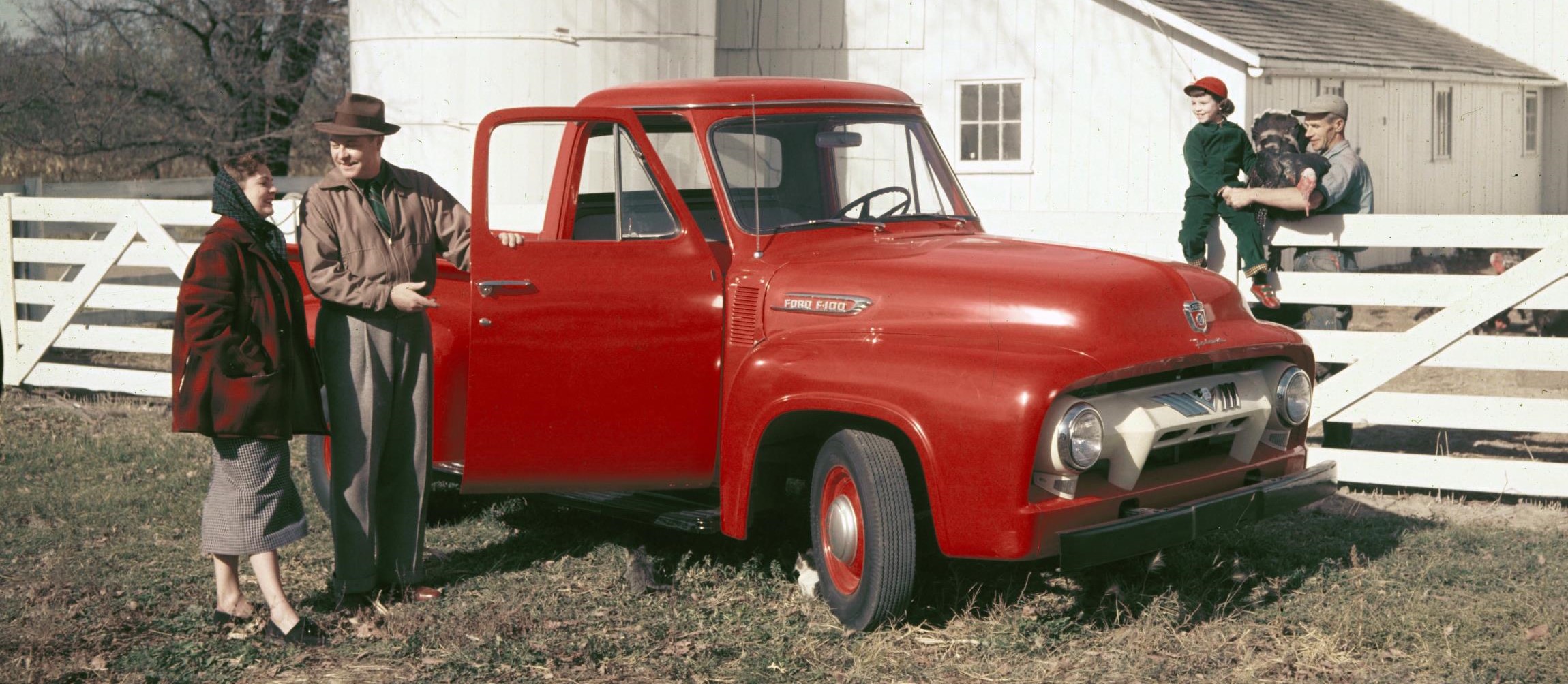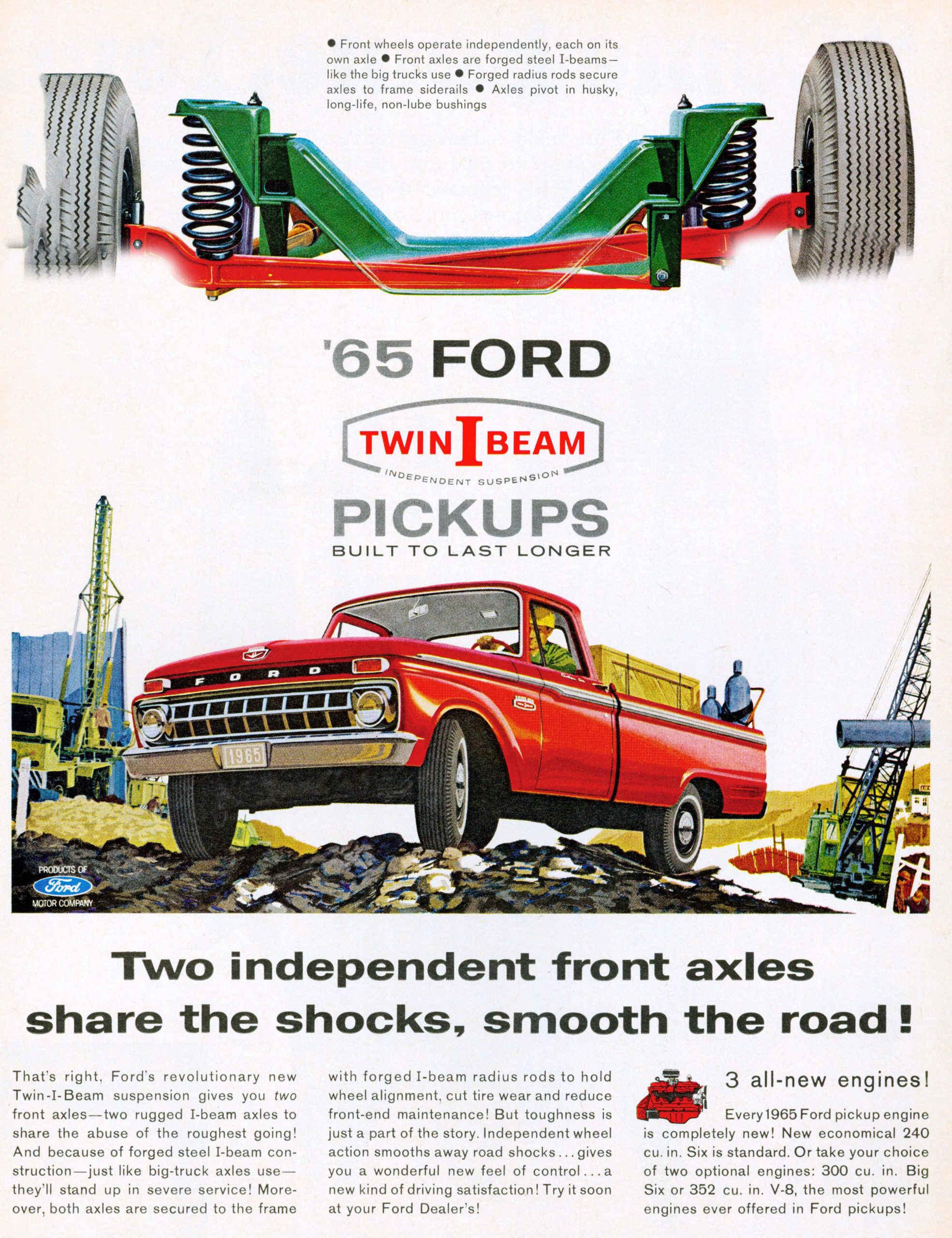
Ford introduced its first purpose-built truck, the 1917 Ford Model TT, forever changing the auto industry – and the very nature of work itself. A century later, Ford trucks are among the most iconic vehicles in the world. F-Series is America’s best-selling truck for 40 consecutive years and best-selling vehicle for 35 straight years. In Canada, Ford F-Series has enjoyed 51 consecutive years as best-selling pickup and now marks seven straight years as best-selling vehicle.
Throughout this rich history, Ford continuously has worked to improve its trucks by listening to truck owners and developing new innovations that improve their ability to get the job done. These innovations give today’s Ford truck owners greater towing and hauling capability, advanced engines for improved efficiency, and driver-assist technologies that make it easier and more convenient to operate.
Birth of a legend
Nine years after the first Model T saw Ford customers asking for a vehicle that could haul heavier loads and provide greater utility for work and deliveries. On July 27, 1917, Ford responded with the Model TT, which retained the Model T cab and engine. The Model TT came with a heavier-duty frame capable of carrying one ton of payload. The factory price was $600; 209 were sold that year.
Similar to the Fordson tractor introduced in 1917, Henry Ford envisioned a chassis that could accommodate third-party beds, cargo areas and other add-ons to deliver the increased functionality needed to get work done. It was a formula for success. By 1928, Ford had sold 1.3 million Model TTs before replacing the truck with the more capable Model AA with a 1.5-ton chassis.
Henry Ford marketed his early trucks heavily in rural areas, according to Bob Kreipke, Ford historian. “Model AA trucks in particular had a certain class to them,” he said. “Customers could use them on the farm, yet still take them to church on Sunday.”
Like the Model TT, the Model AA was available exclusively as a chassis cab offered in two lengths, with new powertrain and axle options for greater capacity. To stay ahead in what had become a hotly competitive business, Ford replaced the Model AA with the even more capable Model BB in 1933. Many were outfitted as mail and freight vehicles, ambulances and stake trucks. Two years later, Ford introduced the 1935 Model 50 pickup, powered exclusively by its famous Ford Flathead V8 engine.


On January 16, 1948, the Ford Motor Company publicly revealed the iconic F-1 pickup, beginning the F-Series legacy of tough trucks.
By 1941, Ford had sold more than 4 million trucks. Changing over to war production resulted in the loss of consumer sales but a gain in experience building heavy-duty military truck chassis and four-wheel-drive personnel carriers. A year after consumer production resumed in 1947, Ford leveraged that knowledge to provide even more innovations for its customers.
“After the war, a lot of rural Americans moved to urban and suburban centers looking for work, and many took their Ford pickups with them,” said Kreipke. “Ford saw this as an opportunity, and began work on the next generation of trucks for 1948, what came to be known as F-Series Bonus Built trucks.”
This first-generation F-Series covered Classes 2 through 7 capacities – from the half-ton F-1 to the much larger F-8 cab-over truck. With the arrival of the second-generation F-Series for 1953, Ford increased engine power and capacity, and rebranded the series. The F-1 became the F-100, while F-2 and F-3 trucks were integrated into the new F-250 line. F-4 became F-350. Class 8 trucks were spun off into a new C-Series commercial truck unit that produced iconic C-, H-, L-, N-, T- and W-Series Ford trucks.
Throughout this period, Ford trucks started looking less utilitarian, sporting two-tone paint, automatic transmissions, and improved heater and radio offerings. New standard features debuted with the 1953 F-100, including armrests, dome lights and sun visors. Lower and with a wider cab, the new truck featured integrated front fenders and a more aerodynamic design.


Then, in 1957, Ford tested out a car-based truck – the Falcon Ranchero. Marketed as “More Than a Car! More Than a Truck!,” this light-duty truck brought car-like amenities to consumers.

Creating the Built Ford Tough brand
In 1961 – 44 years after the Model TT – Ford introduced its fourth-generation F-Series. Lower and sleeker, it debuted the company’s revolutionary twin I-beam front suspension. An upscale Ranger package appeared in 1967. Ads emphasized improved comfort, value and durability, as Ford trucks now offered power steering and brakes, and a lower chassis profile. A larger SuperCab option introduced in 1974 featured more comfortable seating to attract dual-purpose work and family buyers.
With the arrival of the sixth-generation F-Series in 1975, Ford dropped the popular F-100, replacing it with a higher-capacity F-150 pickup to combat the C/K trucks from General Motors. By 1977, F-Series pulled ahead in the sales race, and 26 million trucks later, Ford hasn’t looked back.
That same year, a copywriter for a Ford truck magazine is said to have written three simple words that would come to define the brand – Built Ford Tough. It is more than a slogan – it’s the F-Series brand promise to its owners and the mantra for Ford’s entire truck team.
Trucks were fast becoming universal family vehicles, in addition to being work trucks, according to Kreipke. Instead of renting a truck for a big job or for towing, people now had ones they could use for work during the week, then hitch a trailer to and haul the family in for weekend getaways. Ford trucks were adapting to the changing, more active American lifestyle.
Premium edition trucks, such as the Lariat package introduced in 1978, offered more comfort features including air conditioning, leather trim, and power windows and locks. In 1982, Ford charted a different course with an all-new compact truck – Ranger. Versatile and efficient, Ranger quickly built a reputation for being tough and capable, leading it to thrive in diverse markets around the world.


You must be logged in to post a comment.